
Image courtesy of NASA
 Copyright © Michael Richmond.
This work is licensed under a Creative Commons License.
Copyright © Michael Richmond.
This work is licensed under a Creative Commons License.
Much of the material herein is taken from the excellent work by Emily Lakdawalla and other writers for the Planetary Society Blog.
On September 21, the MAVEN spacecraft was scheduled to reach Mars. If its engines took no action, then the craft would zoom past the planet at about 1200 meters per second (2500 mph!). But a short-lived flyby mission would be no fun. Instead, MAVEN was designed to turn around so that its main engines pointed forwards, and fire those engines for 33 minutes to slow itself down. Instead of flying past the planet, if all went well, it would slow down enough to be captured by Mars' gravity.

Image courtesy of
NASA
It worked! The engines fired according to plan, and MAVEN entered a high elliptical orbit around Mars. Hooray!
Over the next six weeks, the engine would be fired again, by much smaller amounts, to slow down MAVEN and shrink the size of its orbit. By Halloween, the orbit will reach its final shape: an ellipse over the poles of the planet.

Image courtesy of
NASA's MAVEN overview, Nov 8, 2013
Two days later, India's Mars Orbiter Mission (MOM) approached the Red Planet. It had taken a somewhat less direct path to Mars:
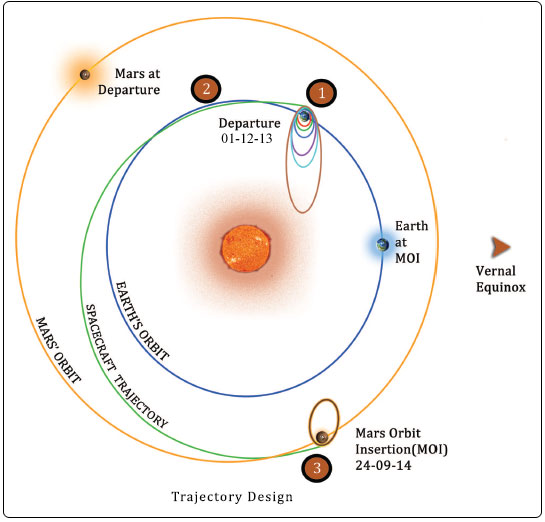
Image courtesy of
the ISRO MOM website
On Sep 23, at 9:00 PM Eastern Daylight Time, the big engine on MOM fired for 24 minutes, slowing the spacecraft down so that it would be captured by gravity into an orbit around Mars. Again, success! MOM is currently in a highly elliptical orbit around the planet, much larger than the orbit which MAVEN will eventually have.
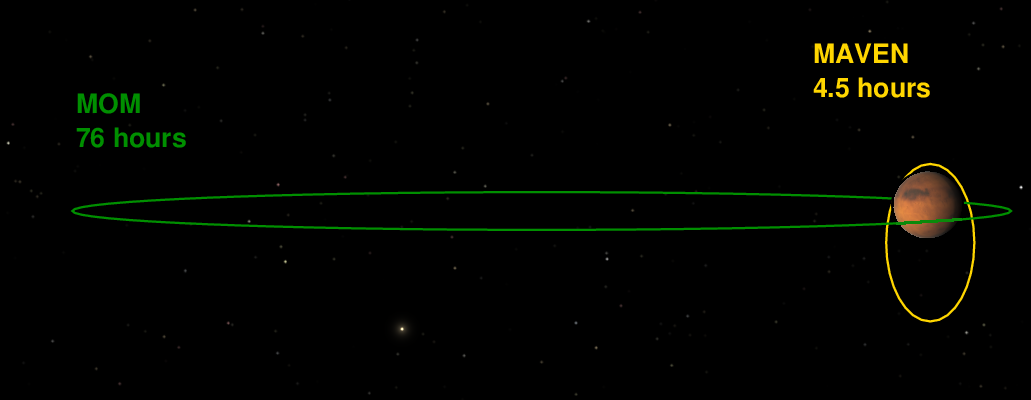
The two spacecraft have some similarities: both consist of a main "bus", holding the instruments and engines, and a set of solar panels to provide power.
Here's MAVEN in the lab:

Image courtesy of NASA
and here's MOM.

Image courtesy of
ISRO and
Deccan Chronicle
You can see that MOM is slightly smaller, and less massive, too. That means that the rocket launch which took MOM up into space could be less powerful than the rocket which lifted MAVEN.
MAVEN: launch mass = 2454 kg payload mass = 65 kg
MOM 1337 15
As you will see soon, MAVEN carries more instruments than MOM.
The MAVEN spacecraft is designed primarily to study the atmosphere of Mars, and particularly interactions between the Sun and Mars' atmosphere.
Particles from the Sun fly through space and can smash into the atmosphere of a planet. Most of the particles are electrically charged, and so can be deflected by a magnetic field. The Earth's strong magnetic field blocks many of the particles in the solar wind, and funnels a small fraction of them to the magnetic poles.
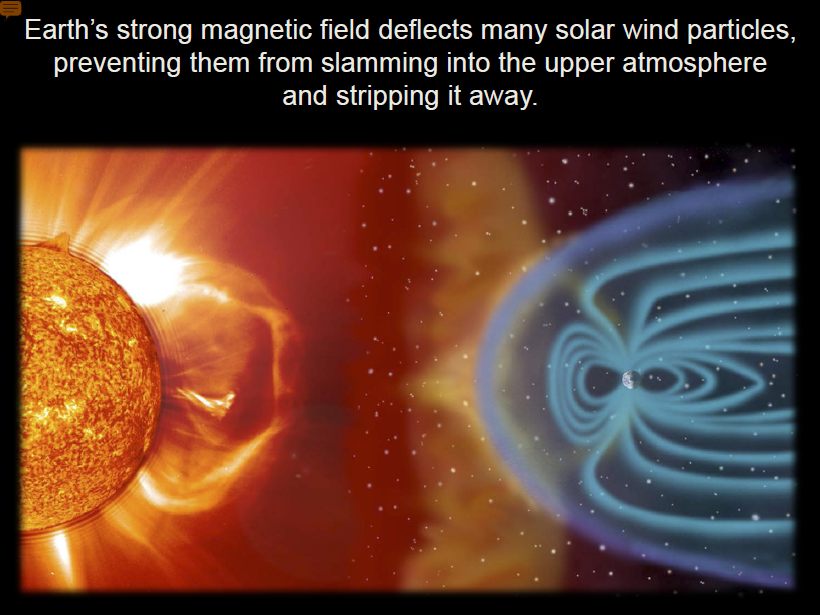
Image courtesy of
NASA's MAVEN overview, Nov 8, 2013
The particles which hit the Earth's atmosphere create beautiful aurorae:

Image courtesy of
NASA's MAVEN overview, Nov 8, 2013
Unlike the Earth, Mars does NOT have a strong magnetic field. So, solar particles are free to slam into its atmosphere ...
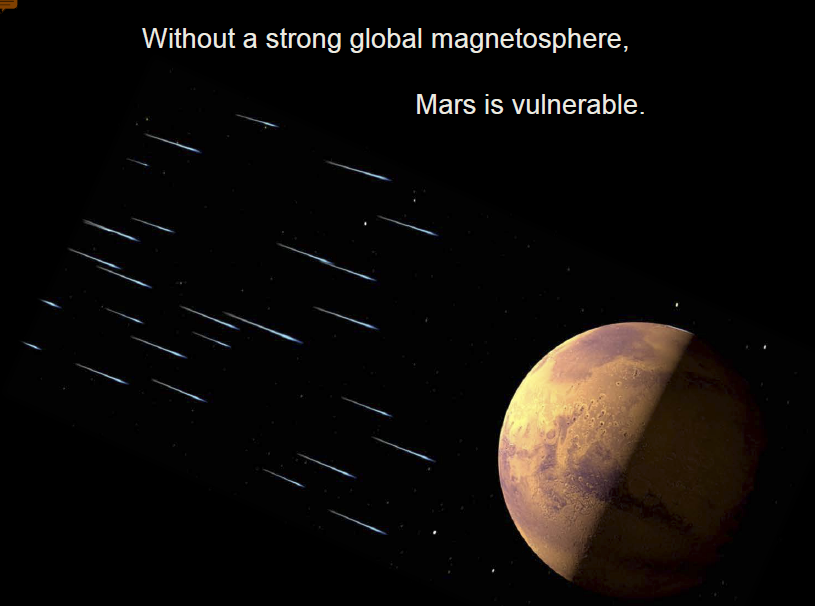
Image courtesy of
NASA's MAVEN overview, Nov 8, 2013
... which can break atoms apart,
and kick particles out of the atmosphere into space.
We think that Mars has lost much of a thicker atmosphere
it once held, long ago.

Image courtesy of
NASA's MAVEN overview, Nov 8, 2013
How will MAVEN study the atmosphere? Unlike other Mars missions, it does not carry a high-power camera to take pictures of the surface. Most of its instruments focus on particles in the upper atmosphere.
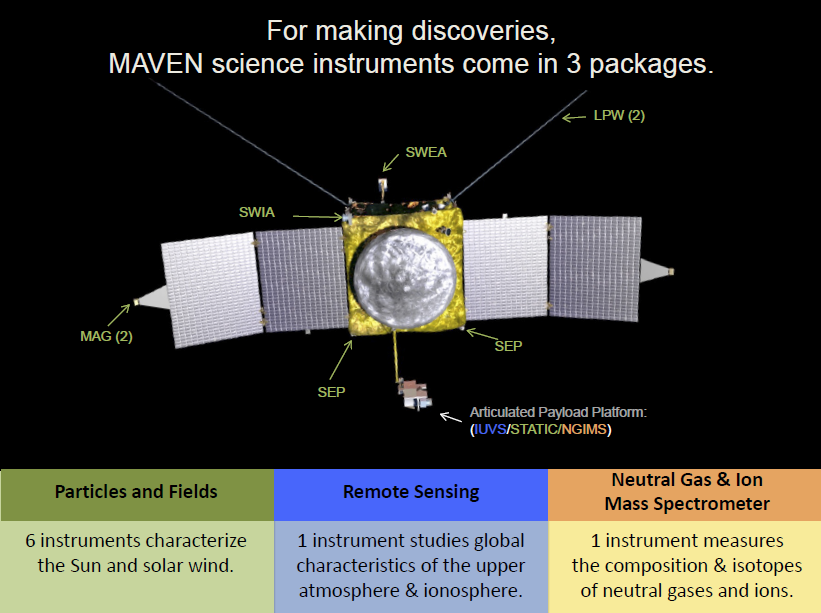
Image courtesy of
NASA's MAVEN overview, Nov 8, 2013
Six of the instruments fall into the "Particles and Fields" category, meaning "don't produce pretty pictures."
If you were to ask me, I'd put one more instrument into that category.
The one remaining instrument has some "glamour" --- it can take pictures of a sort.
The IUVS has already been tested, and it works!
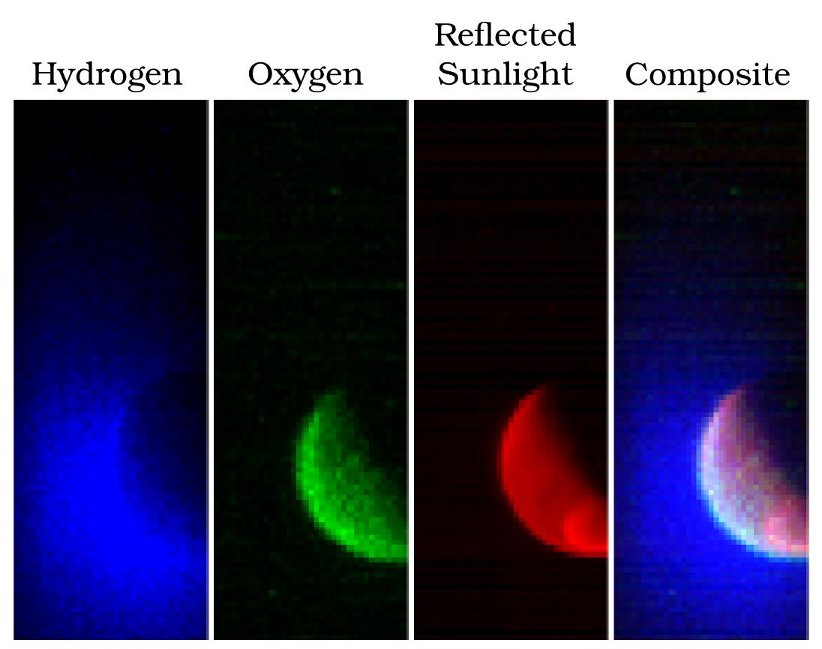
Details of the first IUS observations
The MOM spacecraft is also designed primarily to study the atmosphere of Mars, perhaps most especially to look for methane in the atmosphere.
I would place two of MOM's instruments into the "Particles and Fields" category:
Lots of people are excited to see the results of this instrument, since the presence of methane on Mars is uncertain (some claim yes, some claim no); and one possible source of methane is life-like chemical reactions.
There are two instruments which can create images, in a fashion. One really is a plain old optical camera, pointing at the Martian surface, and the other is a spectrometer which will determine the chemical composition of surface materials.
The Mars Colour Camera has already been activated -- and it works!
When the spacecraft is at the high point of its orbit, far from Mars, the camera can see the entire planet at once:
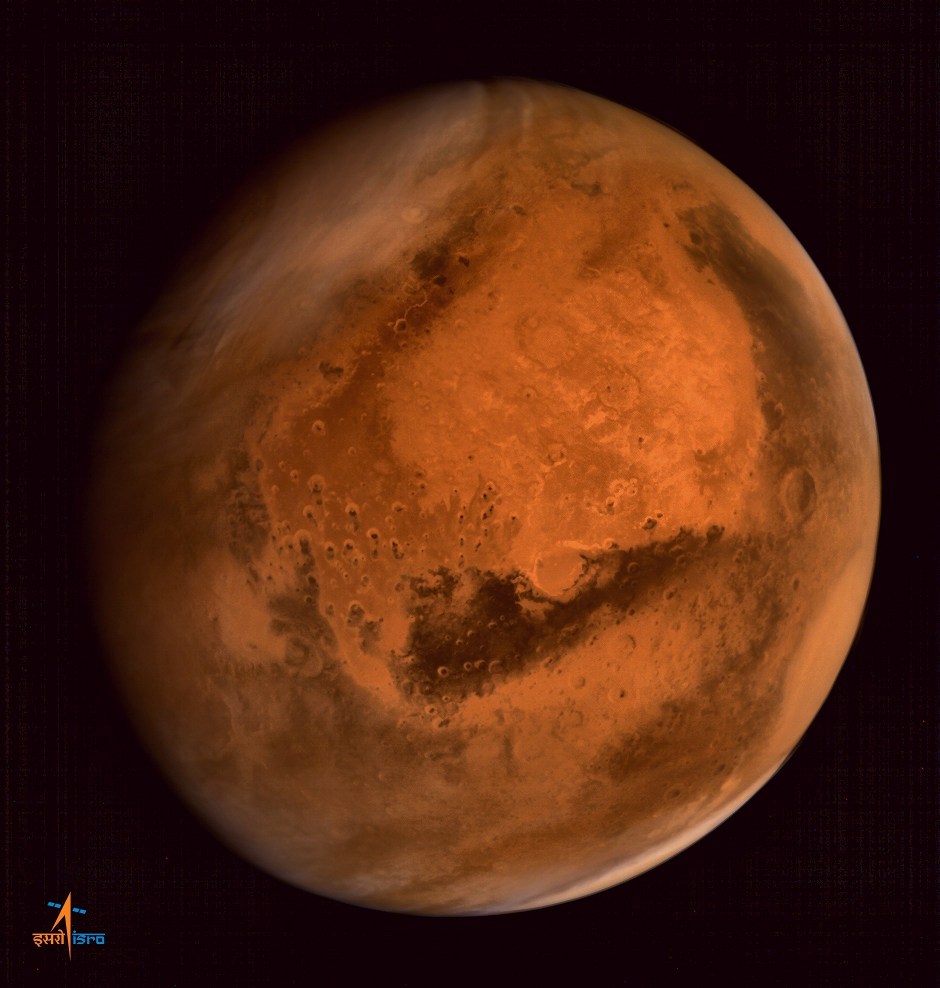
Image courtesy of
NASA and the ISRO
And when the ship moves closer, towards the low end of its orbit, it gets a more detailed view of a small portion of the disk:
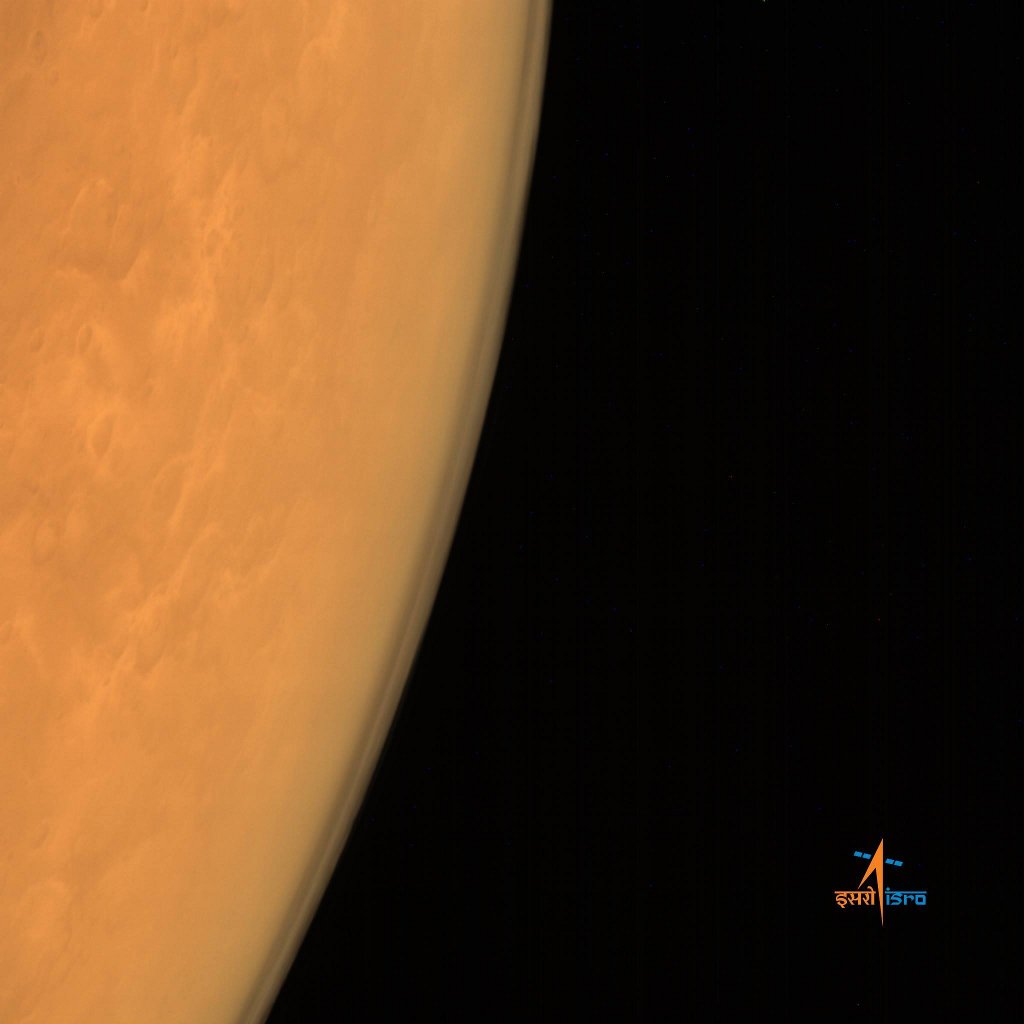
Image courtesy of
NASA and the ISRO
The MAVEN primary mission is 1 year long (through 2015). The team has a plan to continue studying Mars for an extended period of another 2.5 years (through 2018). If circumstances permit, the spacecraft will then move into a higher orbit, to avoid atmospheric drag.
MAVEN may help other missions by acting as a communications relay between Earth and vehicles on the surface. The next NASA lander mission to Mars is scheduled to arrive on Mars in 2021.
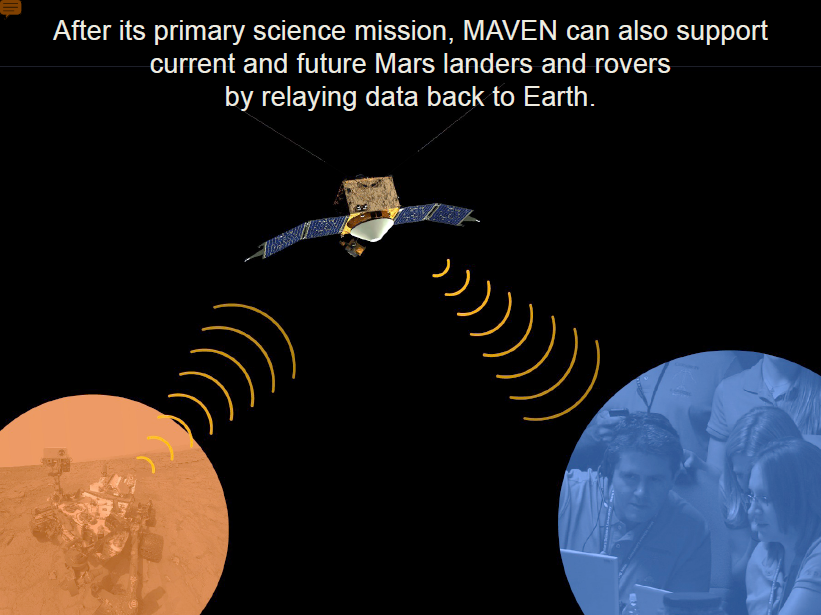
Image courtesy of
NASA's MAVEN overview, Nov 8, 2013
MOM, on the other hand, has a somewhat shorter life expectancy. The primary mission is estimated to be six to ten months, and there is apparently no word (yet) on what might happen during any extra time.
MOM is not expected to act as a communications relay.
Indeed it is! Comet Siding Spring (named after the observatory in Australia which discovered it) will zoom past Mars at a speed of about 57 kilometers per second on Oct 19.
Most of the orbiting spacecraft have planned their orbital motion so that the ships will be on the other side of Mars as the comet zips past. It's a safety measure: any particles of ice or dust which follow the comet could damage a spacecraft if they collide.
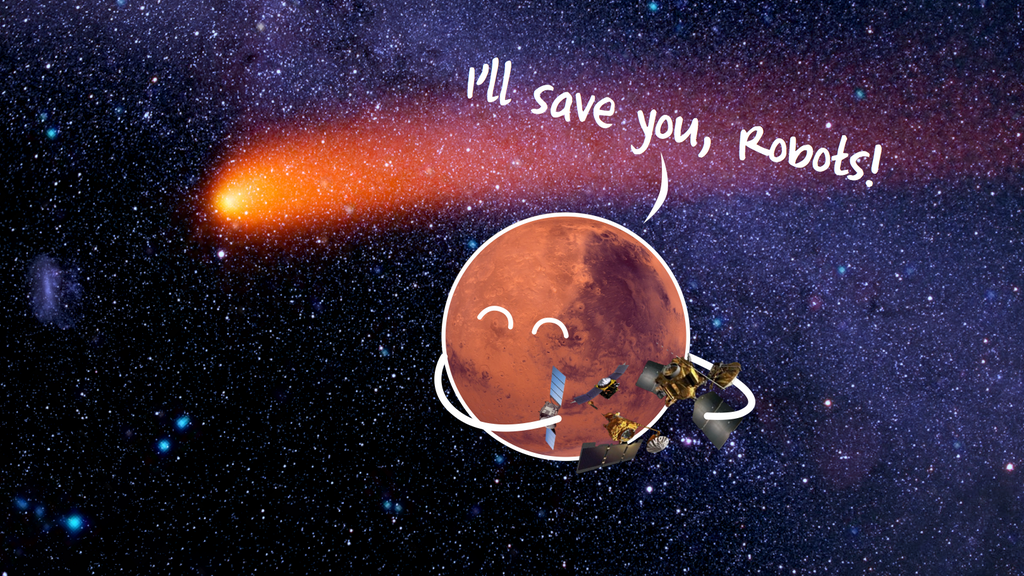
Image courtesy of
Alex Parker
None of the spacecraft will be close enough to get any really cool pictures of Comet Siding Spring. For example, the HiRISE camera on Mars Reconnaisance Orbiter could take images which look sort of like this (these are simulated images, not real ones):
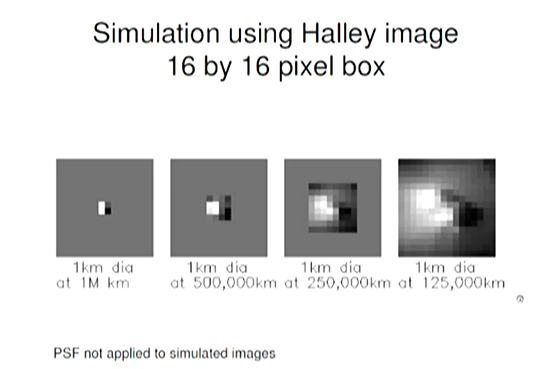
Image courtesy of
the Planetary Society Blog
Pretty crummy, aren't they?
That's okay, because if you want to see some really COOL pictures of a comet, forget about Comet Siding Spring. Instead, look at the images recently taken by the Rosetta spacecraft as it orbits Comet 67P/Churyumov-Gerasimenko.

Image courtesy of ESA/Rosetta/NavCam and
the Planetary Society Blog
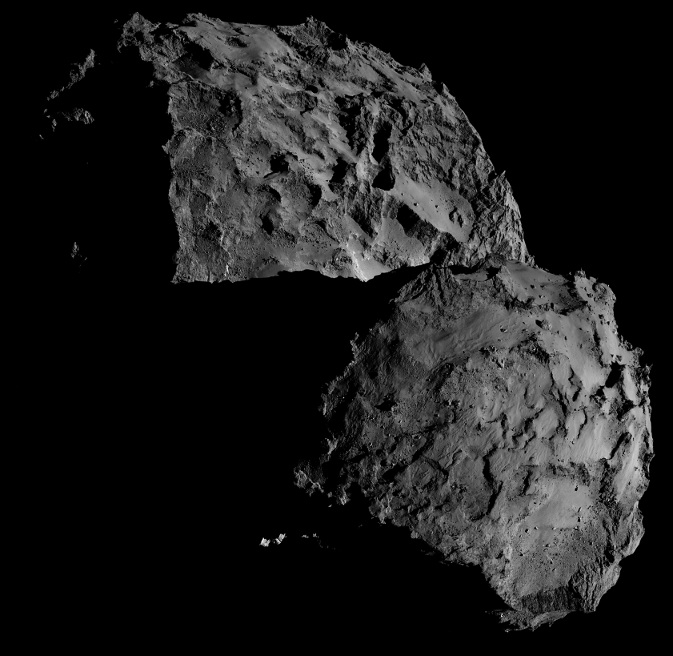
Image courtesy of ESA/Rosetta/NavCam and
the Planetary Society Blog
Or, for some real fun, take a look at Mattias Malmer's movie of the comet rotating.
 Copyright © Michael Richmond.
This work is licensed under a Creative Commons License.
Copyright © Michael Richmond.
This work is licensed under a Creative Commons License.